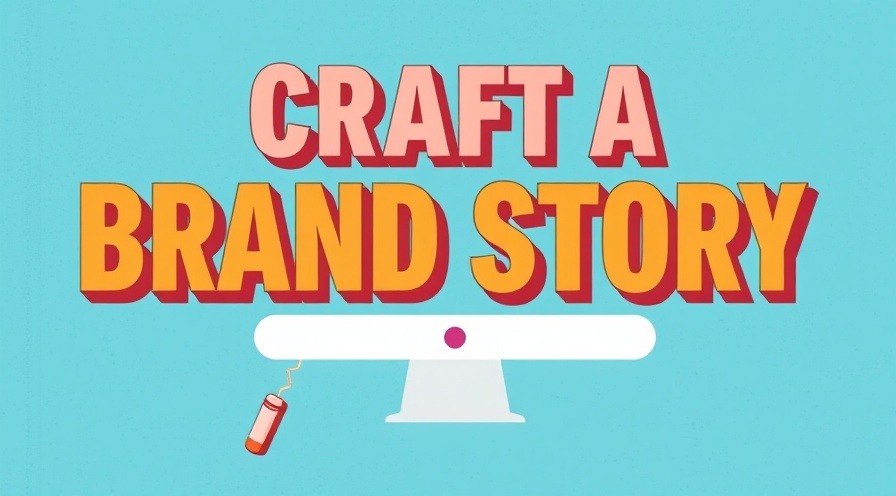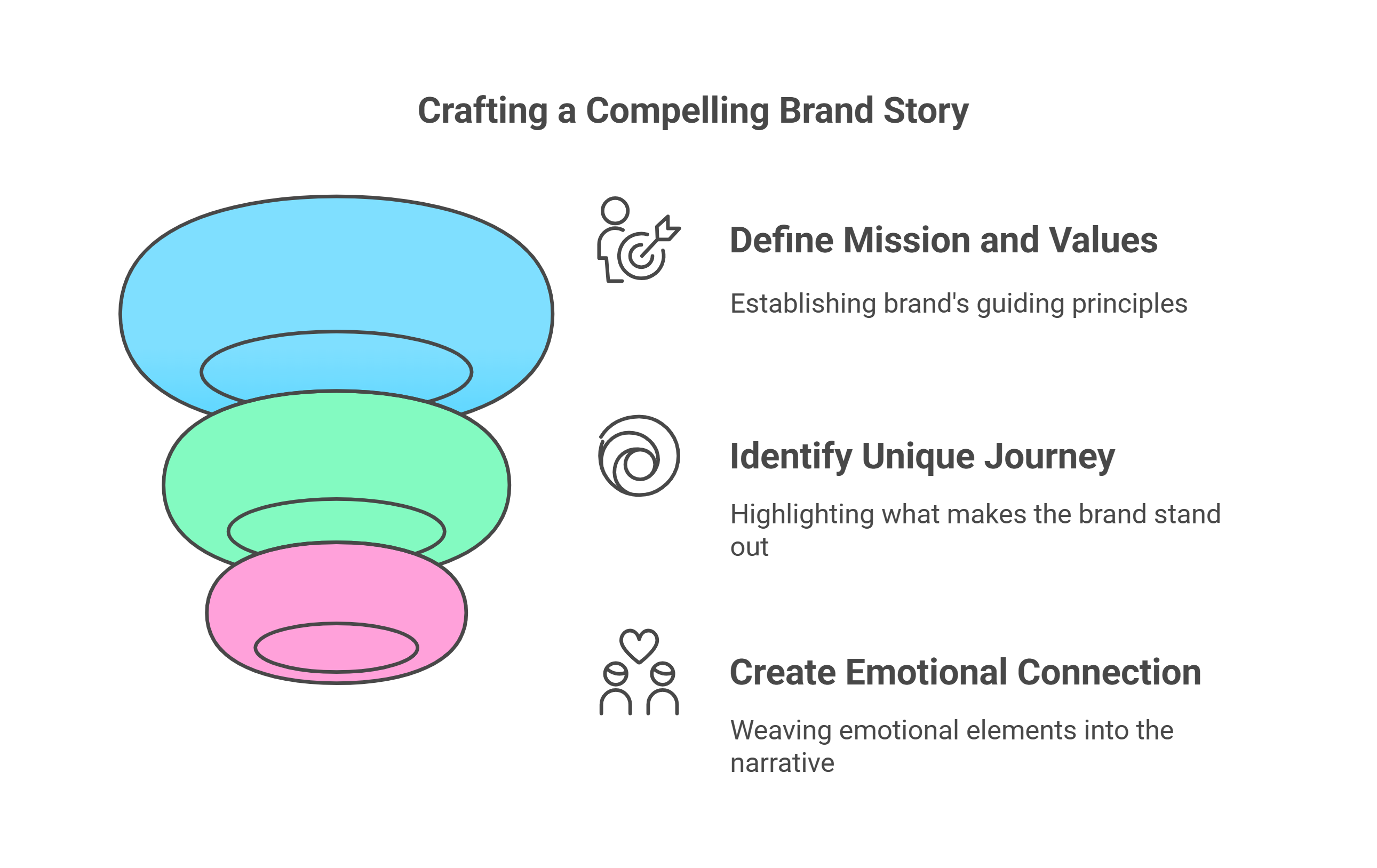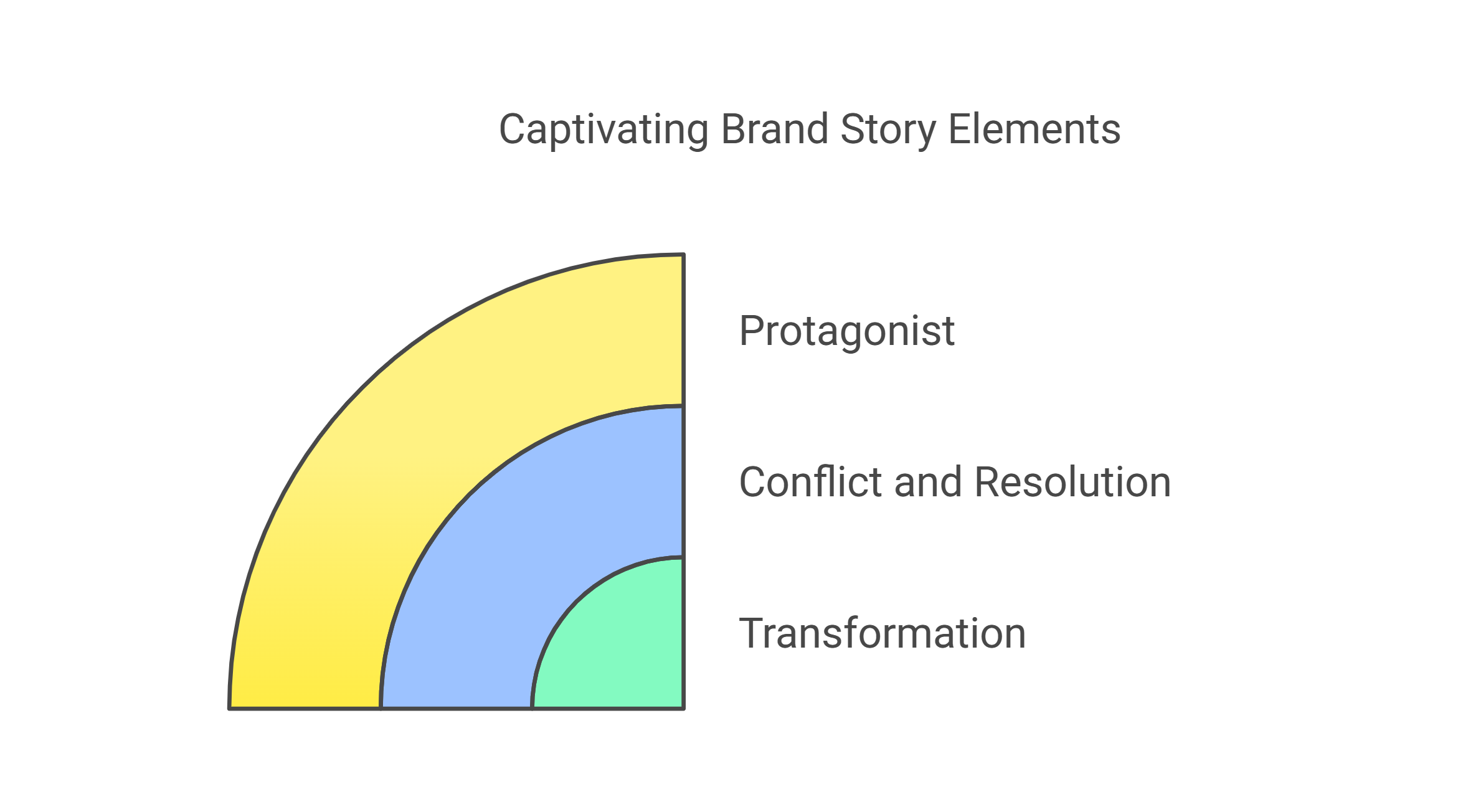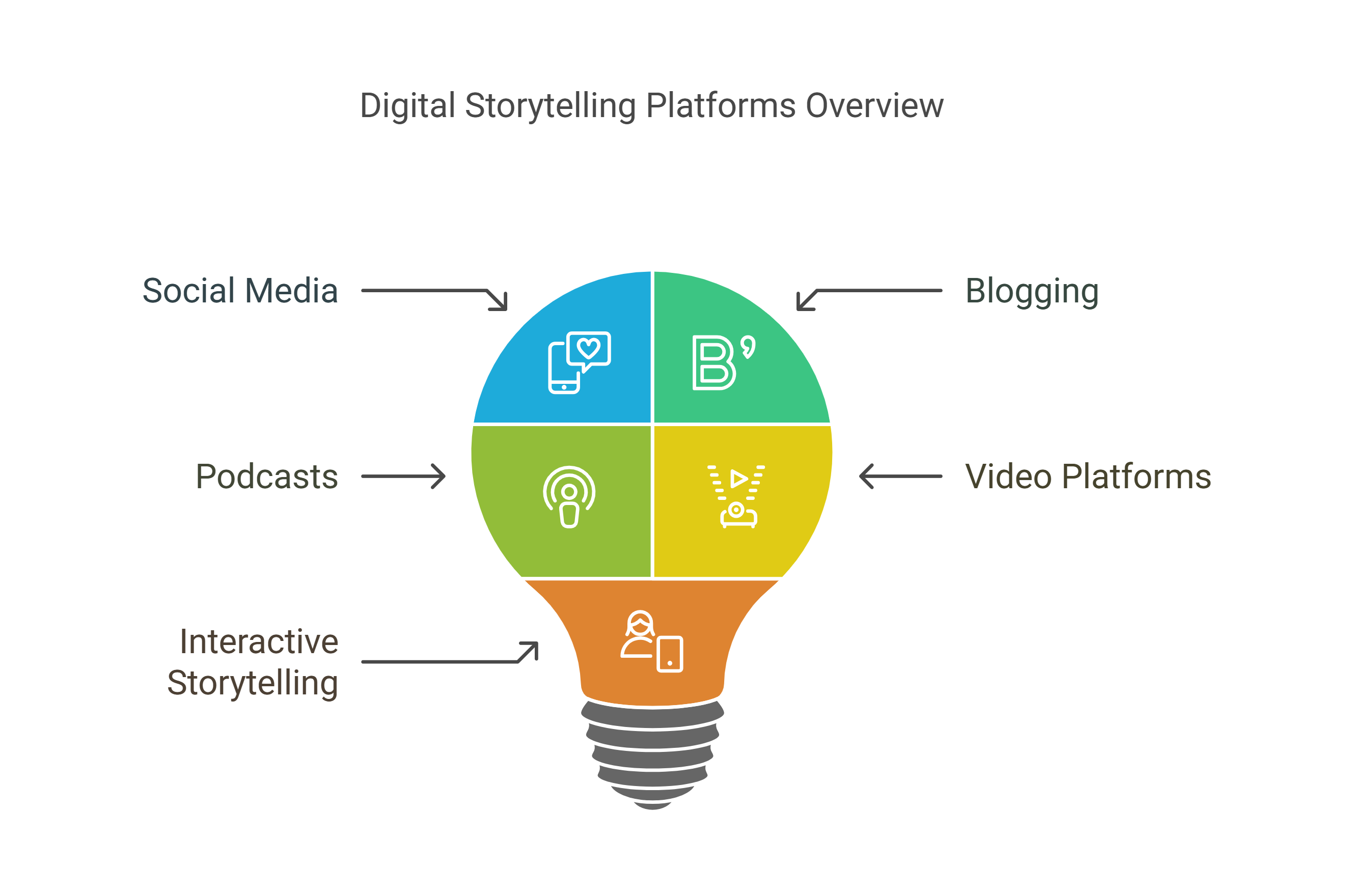
Craft a Brand Story that Captivates and Converts
Picture this: you’re at a crowded party, and everyone’s competing for attention. Some are louder than others, some have flashy outfits, but the one who truly captivates the room is the person with a story that resonates. In the bustling marketplace of brands, your business is at that party.
The question is, how do you become the storyteller everyone wants to listen to? Enter the power of a unique brand story. In today’s competitive market, having a compelling narrative isn’t just a nice-to-have; it’s essential. It’s what sets you apart from the countless others vying for your audience's attention.
A well-crafted brand narrative does more than just introduce your products or services—it creates an emotional connection. It's like finding your brand's soulmate in your customer base. Imagine transforming casual customers into loyal advocates who not only buy from you but sing your praises from the rooftops (or at least their social media platforms).
A captivating brand story has the magical ability to do just that. So, if you're ready to turn your brand into the life of the party and win over hearts and wallets alike, keep reading. We’re about to dive into the art of storytelling that captivates and converts.

Understanding Your Brand's Core
Before you can tell a captivating brand story, it's crucial to understand what makes your brand tick. No, I'm not talking about the caffeine-fueled brainstorming sessions—I'm talking about the heart and soul of your brand: its mission and values. These are the guiding principles that inform every decision you make, from product development to customer service.
When you clearly identify these elements, your unique brand story naturally begins to take shape. Think of it as finding the melody before writing the lyrics; it sets the tone and ensures harmony in everything that follows.
Now, onto differentiating your brand. Imagine your brand as a quirky character in a crowded room full of other quirky characters. What makes yours stand out? Is it the journey of how your eco-friendly coffee bean company started in your garage—or perhaps your tech startup's mission to bring internet to remote areas of the world, even if it means climbing a few mountains (literally)?
Your unique journey is more than just a backstory; it's an integral part of your brand differentiation strategy. It highlights your determination, creativity, and resilience, showing customers why they should choose you over the competition.
Finally, let's talk about emotions. Yes, get ready to channel your inner Shakespeare because connecting emotionally with your audience is paramount. Customers are more likely to engage with a brand story that resonates on a personal level, tugging at those heartstrings or tickling their funny bone. By weaving emotional elements into your narrative, you turn casual observers into invested participants who feel a genuine connection to your brand.
Whether it's through humor, empathy, or shared values, establishing this emotional bond is key to fostering long-term customer engagement and loyalty. After all, who doesn't want their brand to be the one that customers rave about at dinner parties?

The Elements of a Captivating Brand Story
Every epic tale needs a hero, and your brand is no different. Crafting a relatable protagonist for your brand can be as simple as defining who or what embodies your brand's mission. Think of your brand as the underdog in a sports movie—cue the slow-motion training montage! For example, if your brand's mission is to revolutionize sustainable fashion, your protagonist might be an eco-conscious individual striving to make a difference.
This character doesn’t have to be human; it could be an idea, a product, or even a whimsical mascot that personifies your brand's values. The key is relatability, making sure that your audience can see a bit of themselves in this character, cheering them on from the bleachers of their minds.
Next comes the juicy part of any story: conflict and resolution. Without conflict, even the most charming protagonist can feel flatter than a pancake. Conflict in a brand story doesn't have to involve dragons or evil wizards—unless you're in the business of slaying mythical creatures, in which case, carry on! Instead, think of challenges your brand has faced or obstacles your customers encounter.
Maybe your brand fought against industry norms or tackled environmental issues head-on. The resolution should illustrate how your brand, with its trusty toolkit of products or services, overcame these challenges and emerged victorious. These storytelling techniques not only engage audiences but also demonstrate your brand’s resilience and problem-solving prowess.
Finally, highlight the transformation your brand promises to deliver. Just like the protagonist who learns valuable lessons by the end of a movie, your brand should showcase the positive changes it brings about. Whether it's transforming the way people interact with technology or helping individuals lead healthier lives, this transformation is the magic potion that turns potential customers into loyal fans.
It's important to communicate how this change aligns with customer values and aspirations, creating a narrative that's not just about what you offer but also about who they can become by choosing your brand. By weaving these elements into your brand story, you create a narrative that captivates and converts—no enchanted spells required!

Aligning Your Story with Customer Values
Understanding the needs and desires of your target audience is like discovering the secret ingredient in Grandma's famous cookie recipe—it's essential for success, but a little elusive. To craft a unique brand story that truly resonates, you must first dig deep into what makes your audience tick.
Are they eco-warriors on a mission to save the planet, or perhaps tech enthusiasts eager to embrace the latest gadgets? By knowing their motivations and pain points, you can tailor your narrative to address their specific desires and needs, making them feel like your brand was practically custom-made for them.
Once you've cracked the code on what your customers value, it's time to weave those insights into your brand journey. Tailoring your brand story to reflect these values isn't just about tossing in a few buzzwords and hoping for the best. It requires a genuine commitment to aligning your brand's mission with the ideals of your audience.
Imagine you're crafting a heartwarming tale where your product or service is the knight in shining armor, swooping in to save the day for your customers. When done right, this approach not only attracts but also converts potential customers into loyal followers who feel understood and valued.
Building trust through authenticity and transparency might sound like something straight out of a self-help book, but in the world of branding, it's pure gold. In today's era of information overload and skepticism, consumers are quick to spot any hint of insincerity.
To avoid being cast as the villain in your own story, be open about your brand's journey—the highs, the lows, and even those awkward teenage years when you weren't quite sure what you were doing. By sharing your genuine experiences and showing vulnerability, you create a bond with your audience that's hard to break. After all, who doesn't love rooting for an underdog who triumphs against all odds?

Utilizing Visual and Emotional Storytelling
In the realm of business storytelling, visuals are like that friend who always brings snacks to the party—they make everything better and more engaging. When it comes to crafting a brand narrative, incorporating visuals can amplify your message, making it not just heard but felt. Think of Nike's "Just Do It" campaigns.
These ads don't just show athletes; they capture moments of triumph and struggle, visually echoing the brand values of perseverance and excellence. By weaving powerful images into your story, you create a tapestry that captures attention and lingers in the minds of your audience longer than Uncle Bob's tales of his glory days.
Beyond visuals, emotional triggers are your secret weapon in creating memorable connections with your audience. Picture this: You're watching a commercial about a puppy being adopted, and suddenly you find yourself reaching for tissues while simultaneously Googling local shelters. That's the magic of emotional storytelling.
By tapping into universal feelings like joy, nostalgia, or even a good ol' underdog victory, you resonate with your audience on a deeper level. This connection is pivotal because when consumers feel something, they're more likely to remember your brand and become loyal advocates.
Consistency is key when spreading your brand story across various platforms. Imagine telling a thrilling adventure story but switching genres halfway through—suddenly it's a cooking show. Confusing, right? The same applies to brand storytelling. Whether it’s through Instagram reels, blog posts, or newsletters, maintaining a consistent narrative ensures that your audience recognizes and trusts your brand regardless of where they encounter it.
This doesn’t mean being monotonous; think of it as keeping the same melody while playing different instruments. By harmonizing your brand values across all channels, you create a symphony that resonates with your audience and solidifies your presence in their lives.

Leveraging Digital Platforms for Storytelling
In today's digital age, picking the right platforms to share your unique brand story is akin to choosing the right stage for a Broadway performance. You wouldn't perform "Les Misérables" in a local coffee shop, and similarly, you shouldn't pour your heart into a brand narrative only to post it on a platform where your audience doesn't hang out.
It's crucial to understand where your audience spends their time and which platforms will amplify your story's resonance. Whether it's the captivating visuals of Instagram, the professional allure of LinkedIn, or the dynamic conversations on Twitter (or whatever X is now called), each platform offers distinct opportunities for storytelling magic.
Social media, with its endless possibilities for engagement, is like a choose-your-own-adventure book for brand stories. It allows you to make your narrative interactive, inviting your audience to become part of the story rather than just passive listeners.
For example, through Instagram Stories or Facebook Live sessions, you can host Q&A segments that let your audience shape the narrative by asking questions or sharing their experiences. This interaction not only deepens the connection but also makes your audience feel valued and heard, transforming them into loyal fans who root for your brand's success.
Of course, measuring engagement and feedback is the compass that ensures you're not lost at sea with your storytelling efforts. Keep an eye on metrics like likes, shares, comments, and even the occasional emoji reaction—each tells a tale of its own about how well your story resonates with the audience. Feedback is the secret ingredient that helps refine and polish your narrative; consider it constructive criticism from a friendly peanut gallery.
By understanding what aspects of your story hit home and which parts need tweaking, you can continuously improve and adapt your brand story to keep it fresh, relevant, and engaging. Remember, storytelling is an ever-evolving art form, and with the right digital tools, you can craft a narrative that not only captivates but converts casual viewers into brand advocates.

Turning Customers into Brand Advocates
Imagine your customers as the ultimate cheerleaders for your brand, pom-poms and all. Encouraging them to participate in your brand story is like inviting them onto the field. You can do this by creating opportunities for them to share their experiences and ideas.
Whether it's through social media challenges, user-generated content campaigns, or inviting feedback, getting your customers involved makes them feel valued and heard. And let's be honest, who doesn't like feeling like they're part of the "in-crowd"?
Sharing testimonials and success stories is like giving your brand a microphone to belt out its greatest hits. Nothing speaks louder than a satisfied customer who’s ready to tell the world how your product changed their life—or at least their sock drawer.
Encourage happy customers to share their stories by making it easy for them to do so. Offer incentives like discounts or shout-outs for those willing to share their experiences. Just remember, the goal is authenticity; nobody likes a forced encore.
Creating a community around shared values and experiences turns your brand into more than just a product—it's a movement! People naturally want to belong to something bigger than themselves, and if you can tap into that desire, you've hit the jackpot. Consider hosting events, both online and offline, that bring your customers together.
This could be anything from a virtual coffee chat to an annual meetup. The key is to foster connections based on common interests or values related to your brand. Who knew building a brand community could be as fun as organizing a block party?
By transforming your customers into advocates, you’re not just increasing sales; you're building a tribe that supports and amplifies your brand message. This kind of engagement creates a ripple effect, where each advocate brings in more potential customers through their genuine enthusiasm.
In the world of marketing, word of mouth is still king—except now it's digital, global, and often involves memes. So go ahead, roll out the welcome mat, and invite your customers to be part of something special.

Reaping the Rewards of a Unique Brand Story
A well-crafted brand story isn't just the cherry on top; it's the whole sundae! In today's bustling market, your unique brand story is your secret weapon. It doesn't just attract customers—it transforms them into lifelong advocates who sing your praises louder than your mom at your high school talent show.
By weaving a narrative that's as compelling as a page-turner, you not only inspire action but also foster unwavering loyalty. It's like having a squad of fans who can't wait to see what you do next.
Effective storytelling strategies are the magic wand that turns potential customers into loyal followers. When done right, they create an emotional bond that keeps people coming back for more, even if just to hear the next chapter in your brand's saga.
As you continue to nurture this connection, remember that authenticity and consistency are your trusty sidekicks. So go ahead, unleash your brand's unique tale and watch it captivate and convert with grace and perhaps a touch of humor—because who doesn't love a good laugh along with their brand loyalty?
 Add Row
Add Row  Add
Add 



